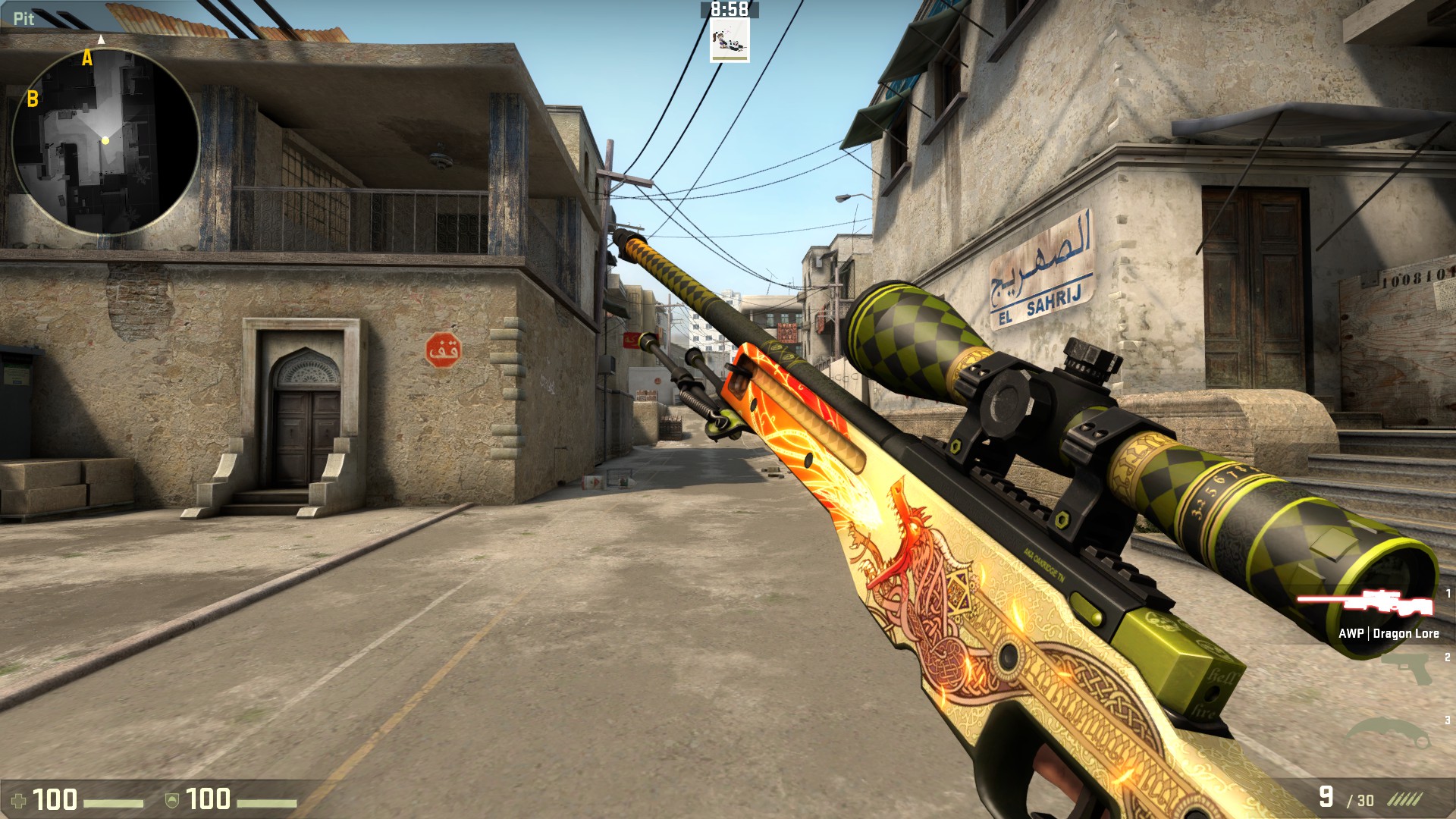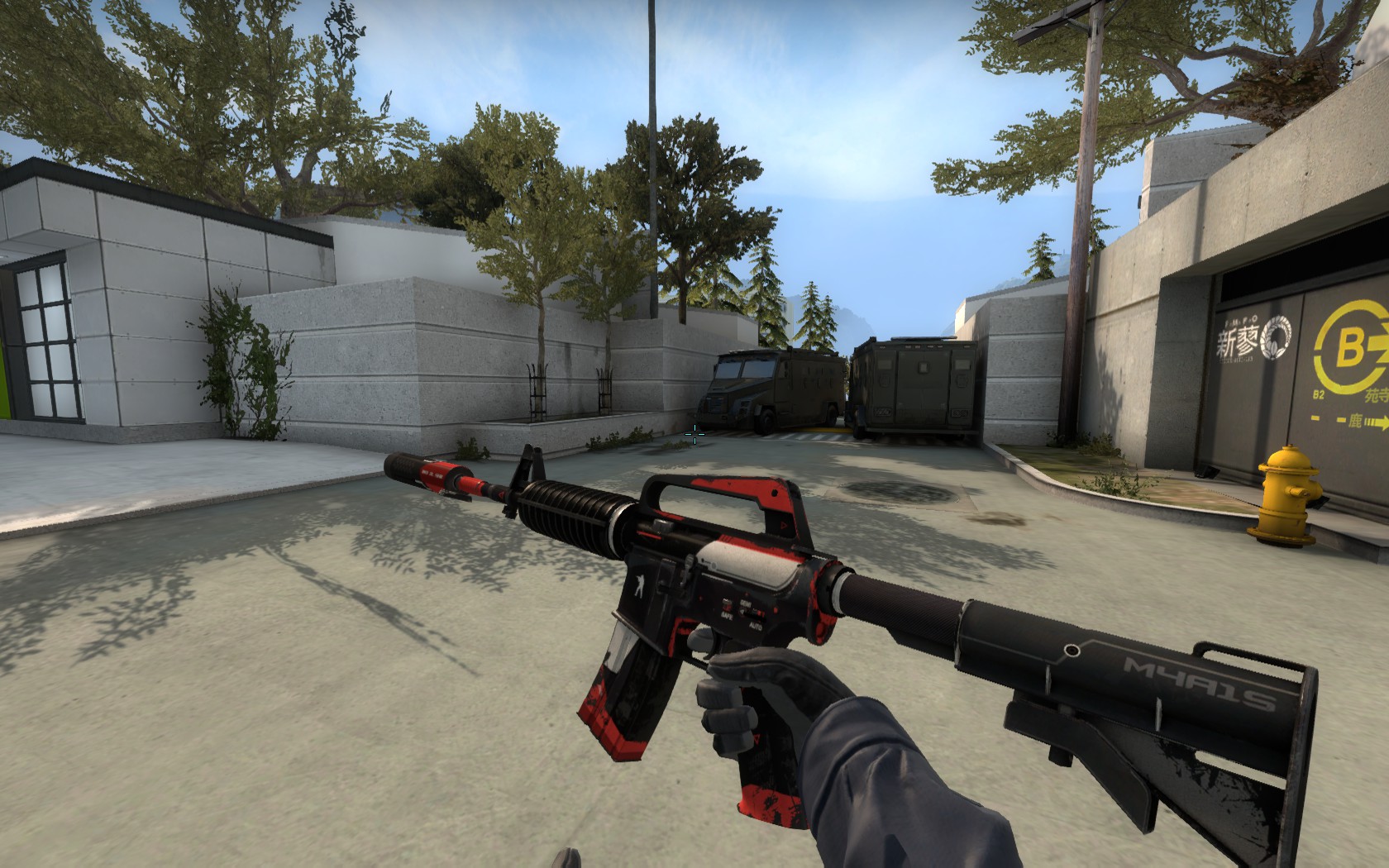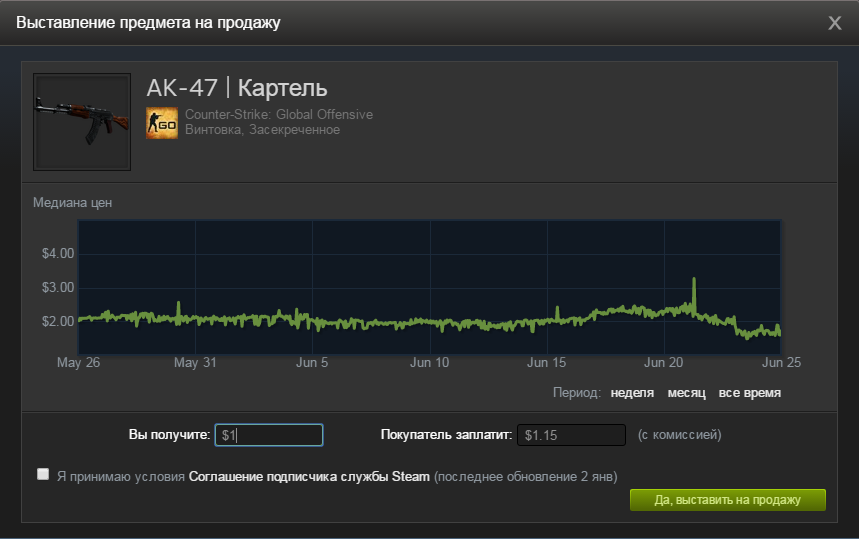Valve filed for illegal gambling organization
The company is accused of organizing gambling with the help of in-game property rates for e-sports matches

AWP Dragon Lore. $ 1300 per set of pixels
The fee for CS: GO in the form of $ 10 is rather purely symbolic and serves as a barrier for cheaters, since VAC (Valve Anti-Cheat) definitely does not cope with them. The main article of monetization can safely be called the sale of keys to cases (chests) with in-game items that change the appearance (but not the characteristics) of the weapon. So, for example, the screenshot above shows one of the most popular, not a single "elephant" models in the game - AWP Dragon Lore, the price of which ranges from ~ 700 to $ 1200-1500, depending on the quality (external riffle "worn"). Dragon Lore with a kill count on the case costs from $ 2500 and up. At the moment, no rifle is available for purchase on the official trading platform, you can only buy it on the black market, from the hands, when exchanging for other items or getting it from a specific case.
Since these “pixels” have a very real value, a whole industry of commerce, exchanges and cyber games betting has grown around the “skins” of weapons, which prompted the average Connecticut resident Michael John MacLeod to sue Valve.
A little about the system of in-game items in CS: GO.
')
The value of the "skins" of weapons is formed from several factors:
- model;
- appearance;
- class of the subject (common, rare, and so on);
- the difficulty of obtaining.
Most successful are the best-looking knives, AWP, AK, M4A1-S, M4A4 (the most commonly used weapon). Next come the basic Glock, USP-S and P2000 pistols. The least valuable are shotguns, SMG and machine guns, since they are bought during the match much less frequently.

M4A4 Howl, price on the black market around $ 850
The most expensive are single or just very rare things, the chance to get that tends to zero. That is what made Dragon Lore, Howl and other "skins" so expensive. Behind these rifles go knives, the most uncomplicated of which cost from $ 50 apiece. Of course, not all things are so expensive. The cost of more massive models of skins ranges from two to three, up to a couple of tens of US dollars.

M4A1-S "Cyrex", cost from $ 6 to $ 12 on the trading floor
Many players want to have such things, but are not able to lay out for a bunch of pixels 20, 50 or 1000 dollars. Therefore, they buy keys for $ 2.49 apiece (one-time key) and try to get something valuable from the cases, which sometimes fall to the player at the end of the match for free. And this is actually very similar to a gamble. If at some point the opening of the chests in another Valve game, Dota 2, became predictable (which, in fact, collapsed the in-game property market and led to hyperinflation), then in CS: GO to predict what exactly you will get from a previously agreed list seems possible.

Window to open one of the types of cases. Below is a list of ascending rarity things that a player can theoretically get for just $ 2.49
In the overwhelming majority of cases, the player receives something worth 3-25 cents when opening the case (recall, the key to the box costs $ 2.49). But besides this, the visual component of the opening of the case with objects almost completely copies the process occurring on the roulette: before the player’s eyes a bar runs through which icons of various weapon models flash, including expensive ones, but the rotation stops automatically and the player cannot influence this process .

GIF-animation of the process after the rotation of the "roulette" case
The process of "spinning" the wheel with objects is pure "makeup" - you can skip it, immediately after using the key, a new item appears in the inventory. But many players until the last look at the alternating series of icons in the hope that for two and a half dollars they will drop an item worth much more.
Surprisingly, this process is absolutely legal and the lawsuit was directed not to the fact that the chance of dropping out of certain items is kept secret, but the opening of the cases itself was turned into a roulette with a chip of two and a half dollars, but that these in-game items are used in the course of bets on eSports matches, specifically, for matches on CS: GO.
Bets on eSports have long become a reality. A number of bookmakers accept bets on large eSports events, and some of them specialize exclusively in eSports.
But before these completely legal offices were created, players had the opportunity to put things from their own equipment on Dota 2 and CS: GO matches using specialized platforms.
Roughly speaking, when betting things on the matches, you are not using money directly, but a money surrogate in the form of intra-world property. The essence of this bet does not change: the coefficients, the gains of things that can then be sold for real money, and most importantly - no age control. If for a real bookmaker you need to bind a credit card, then for betting things you just need to have a phone number tied to your Steam account, which minor account holders can do as well.
Thus, the opportunity to donate things to Steam to third parties without any additional checks from the service allows you to engage in gambling, namely, they are sports betting and generally any types of bets, minors.
According to some, the rates on eSports are just as frivolous as eSports itself, but according to Bloomberg estimates for 2015, $ 2.3 billion were made using in-game assets. And the approach to the process differs little from the same rates on , for example, football: if a player wants to stay in the black and increase his capital, he needs to keep track of matches, workouts, replacement statistics, maps on which the meeting will take place between cyber teams and take into account a lot of aspects and nuances. At this angle, the game on "pixels", which cost quite real money, does not look so harmless anymore.
Why is Valve not struggling with this? The answer is simple: the company has a significant profit from this. Some players sell their items for real money on, for example, ebay, but some simply cannot do it because of their age. Therefore, the "skins" of weapons are actively sold on the Steam marketplace, in order to buy another weapon or some game. Some accumulate large sums for which keys are purchased afterwards for informal gaming stores (for example, gabestore and others). They, in turn, reimburse only 30-50% of the cost of the game with real money.
With all the above-described frauds with items, Valve has a 15% margin - an automatic markup (and even more when buying games). That is, if you want to gain $ 1 for a thing, the buyer will have to pay your dollar + 15 cents, which will go

A window for placing items on sale on the Steam marketplace
As they say, you can not overcome - head.
It was in the fact of receiving Valve "shares" in the course of the sale of things on the site by the plaintiffs that malicious intent was discerned. In their opinion, Valve deliberately acts or does nothing to engage young people in gambling, which, in essence (the largest leagues and tournaments are organized with Valve's approval), are also encouraged by them.
The full text of the claim can be found below.
If the claimant’s claim is satisfied, Valve will have to pay compensation to all the affected players in some way. It is not possible to determine the amount of payments, as well as the number of players now, but it can be said for sure that this figure is huge, as according to unofficial information from the SteamSpy service, more than 20 million digital copies of CS: GO have been sold.
Source: https://habr.com/ru/post/395613/
All Articles